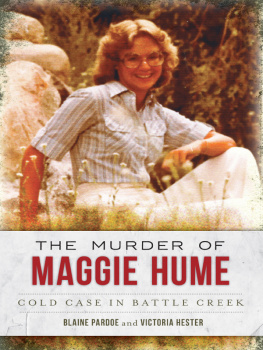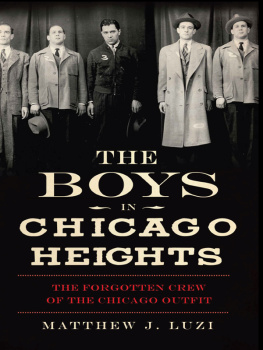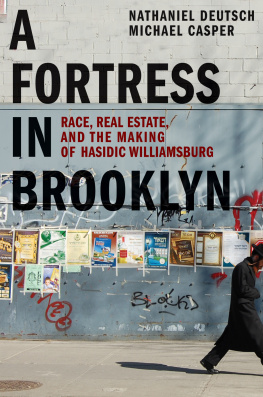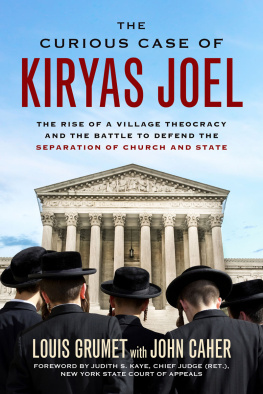Copyright 2012 by Matthew Shaer. All rights reserved
Published by John Wiley & Sons, Inc., Hoboken, New Jersey
Published simultaneously in Canada
No part of this publication may be reproduced, stored in a retrieval system, or transmitted in any form or by any means, electronic, mechanical, photocopying, recording, scanning, or otherwise, except as permitted under Section 107 or 108 of the 1976 United States Copyright Act, without either the prior written permission of the Publisher, or authorization through payment of the appropriate per-copy fee to the Copyright Clearance Center, 222 Rosewood Drive, Danvers, MA 01923, (978) 750-8400, fax (978) 646-8600, or on the web at www.copyright.com . Requests to the Publisher for permission should be addressed to the Permissions Department, John Wiley & Sons, Inc., 111 River Street, Hoboken, NJ 07030, (201) 748-6011, fax (201) 748-6008, or online at http://www.wiley.com/go/permissions .
Limit of Liability/Disclaimer of Warranty: While the publisher and the author have used their best efforts in preparing this book, they make no representations or warranties with respect to the accuracy or completeness of the contents of this book and specifically disclaim any implied warranties of merchantability or fitness for a particular purpose. No warranty may be created or extended by sales representatives or written sales materials. The advice and strategies contained herein may not be suitable for your situation. You should consult with a professional where appropriate. Neither the publisher nor the author shall be liable for any loss of profit or any other commercial damages, including but not limited to special, incidental, consequential, or other damages.
For general information about our other products and services, please contact our Customer Care Department within the United States at (800) 762-2974, outside the United States at (317) 572-3993 or fax (317) 572-4002.
Wiley also publishes its books in a variety of electronic formats. Some content that appears in print may not be available in electronic books. For more information about Wiley products, visit our web site at www.wiley.com .
Library of Congress Cataloging-in-Publication Data
Shaer, Matthew, date,
Among righteous men : a tale of vigilantes and vindication in Hasidic Crown Heights / Matthew Shaer.
p. cm.
Includes bibliographical references and index.
ISBN 978-0-470-60827-2 (hardback); ISBN 978-1-118-09519-5 (ebk);
ISBN 978-1-118-09520-1 (ebk); ISBN 978-1-118-09521-8 (ebk)
1. JewsNew York (State)New YorkSocial conditions21st century. 2. Hershkop, AronTrials, litigation, etc. 3. VigilantesNew York (State)New York. 4. HabadSocial aspectsNew York (State)New York. 5. Crown Heights (New York, N. Y.)Social conditions21st century. I. Title.
F129.B7S53 2012
974.704924dc23
2011028934
For my mom, the
first writer I ever knew
and who would venture to come between two righteous men?
Martin Buber, Tales of the Hasidim
Authors Note
This account is based on a range of police and court documentation, hundreds of hours of interviews with dozens of sources, and months of firsthand reporting. Still, the events described herein are extremely controversial, and although I have sought at every juncture to corroborate the often conflicting memories of the participants, I was sometimes forced to fall back on my own best judgment in assembling the narrative. Most of the dialogue comes directly from trial testimony; elsewhere, it was recreated from the recollections of the involved parties. Some proper names have been changed.
Introduction
In the winter of 2009, I spent several weeks in a harshly lit Brooklyn courtroom, watching the trial of six Lubavitcher Jews, who had been charged by the district attorney with felony gang assault, along with a string of lesser charges, some of them weapons-related. All six defendants were members of a vigilante group called the Crown Heights Shomrim Rescue Patrol; if convicted, each man faced a long spell in federal prison.
The Hasidic community has a storied history of civilian anticrime efforts. There are Shomrim almost everywhere there are large concentrations of Hasidim: in the Williamsburg section of Brooklyn, in Stamford Hill in London, and in Melbourne, Australia. The Shomrim, which means guards in Hebrew, function a little like an auxiliary police force. The members, all volunteers, fix tires, help direct traffic, and escort elderly residents to and from the bus stop. They are also regularly involved in more athletic endeavors, such as chasing down purse-snatchers or breaking up street fights.
I was fascinated by the kind of Jew the Shomrim represented: the Jew who fights back. I thought of the fabled Jewish gangsters of the Lower East SideJohnny Levinsky, Dopey Benny Fein. These were brash and cunning men who found equality and respect in strength and insisted on their place in the world. I thought, too, of the Odessa stories of Isaak Babel, where an assortment of underbosses schemed their way through the district of Moldavanka. Babel, who was killed in 1940 by the Soviet secret police, took an obvious pride in his characters. He was proud of Benya Krik and Froim Grach, and their refusal to be complacent. He was proud that even at their lowliest, they still sought to shape the world to their liking. To bend fate to their will.
The Crown Heights Shomrim, of course, were not criminals. In fact, their stated role was to protect against criminality, to erect a human barrier between the Jewish settlement and the bustle of the world outside city limits. The organizationoriginally known as the Crown Heights Maccabeeswas first pressed into service in the 1960s, when a growing ultra-Orthodox settlement was brought into direct conflict with a much larger black population. (That conflict peaked with the bloody race riots of 1991; Jews in Crown Heights continue to refer to the riots as a pogrom.) For the most part, the Shomrim were viewed by the city as a helpful community presence. Shomrim volunteers tracked down petty criminals and using a fleet of police vehiclesmost of them purchased at city auctionsaided law enforcement in missing person searches.
Yet in fighting backin their deliberate shows of strengththe Crown Heights Shomrim often came into direct conflict with the NYPD and the very community they were sworn to protect.
Almost two years earlier, the Crown Heights Shomrim had responded to a call about a disturbance at the yeshiva dormitory at 749 Eastern Parkway, in the middle of Crown Heights. Witnesses later reported seeing six members punch, strangle, and kick their way through a crowd of rabbinical students. For their part, the Shomrim claimed to have been ambushed. A video taken by one of the students seemed to back up their account: on the tape, the Shomrim are trapped, hemmed in on all sides by a seething mass of black hats and coats. Still, the Brooklyn district attorney had spent months assembling a case against the Crown Heights Shomrim; meanwhile, the alleged victims had filed a civil suit against the members, seeking millions of dollars in damages.
For the Shomrim themselves, the trial was a particularly painfuland infuriatingexperience. Lubavitchers, like all Hasidim, are often loath to sully themselves in a secular court, which they view as less than perfectly attuned to their interests. Under halacha, or Jewish law, any religious Jew should first attempt to settle his dispute through rabbinical arbitration. Yet the alleged victims had not filed first in a rabbinical court and had instead gone directly to the secular authorities. In the formulation of the Shomrim, the yeshiva students were mosers , or rats, who had intentionally flouted religious lawa crime once punishable by death.










